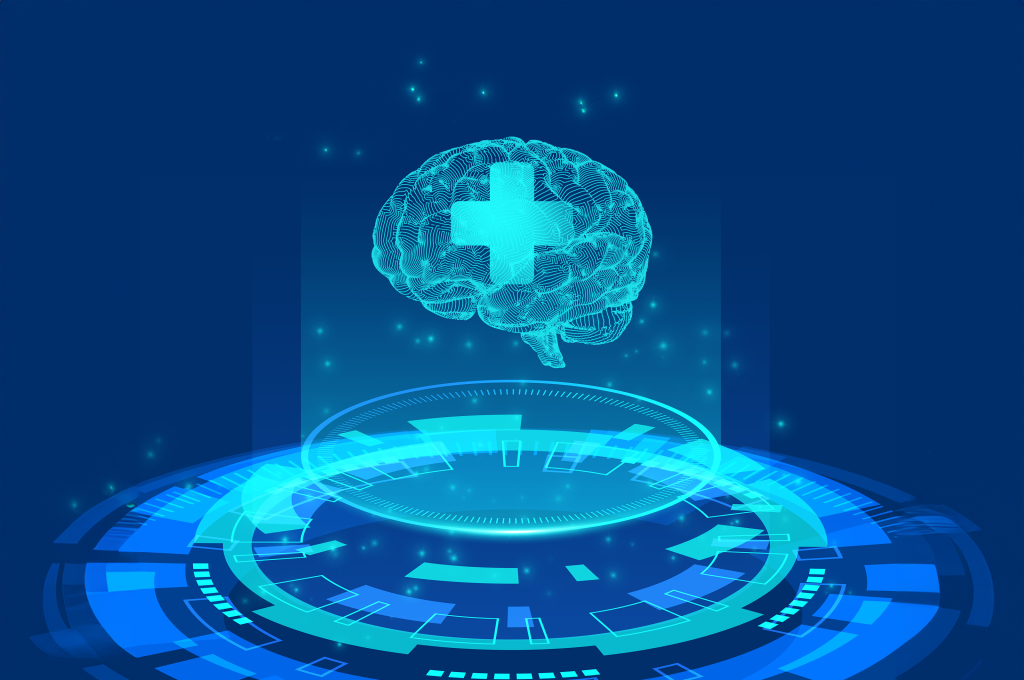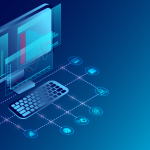Exploring healthcare IT trends 2025: from AI to 5G connectivity
- TronsIT Solutions
- 0 Comments
Tech innovation isn’t just changing healthcare—it’s completely reinventing it. Across hospitals, clinics, and even patients’ homes, healthcare IT is becoming smarter, faster, and more personalized.
One area that’s seen explosive growth is AI in medical billing. Automated systems powered by artificial intelligence are reducing claim errors, accelerating reimbursements, and helping practices cut administrative costs. With machine learning algorithms analyzing coding patterns, billing workflows are now faster and more accurate, allowing providers to focus more on patient care and less on paperwork.
But that’s just scratching the surface. Let’s dive into the most exciting healthcare IT trends that are making waves right now.
1. AI-Powered Diagnostics & Predictive Analytics
Artificial Intelligence is doing far more than billing—it’s now being used to detect diseases earlier and with greater accuracy. AI tools analyze medical images, flag anomalies in radiology scans, and predict patient deterioration before symptoms even arise.
Highlights:
- AI chatbots are now handling basic triage and follow-ups.
- Predictive analytics models help identify patients at risk for proactive interventions.
- AI-powered pathology is helping detect cancers at earlier, more treatable stages.
These tools aren’t replacing physicians—they’re acting as smart sidekicks, enabling faster, data-driven decisions.
2. 5G-Enabled Remote Care & Surgery
5G isn’t just about faster phone internet—it’s enabling healthcare systems to deliver real-time, ultra-reliable care across vast distances.
How 5G is transforming healthcare:
- Remote robotic surgery with minimal latency.
- Instant telehealth consultations with high-definition video.
- Seamless streaming of real-time vitals from ambulances to emergency rooms.
This type of low-latency connectivity enables real-time care in rural and underserved areas, effectively bridging the access gap.
3. Rise of the Internet of Medical Things (IoMT)
The connected ecosystem of medical devices—encompassing wearables, smart monitors, and implantables—is collectively known as the Internet of Medical Things. These devices generate constant streams of patient data, enabling more continuous and personalized care.
Real-world examples:
- Smart inhalers that track usage patterns and alert doctors if doses are missed.
- Continuous glucose monitors that send alerts directly to a patient’s smartphone.
- Wireless pacemakers that communicate with cardiologists in real-time.
This shift from episodic care to data-driven continuity is a game changer—especially for managing chronic conditions like diabetes and heart disease.

4. Cloud-Based Healthcare Infrastructure
Cloud tech is now at the heart of digital transformation in healthcare. Hospitals are moving away from bulky, on-site servers in favor of nimble, scalable cloud platforms.
Why the cloud matters:
- Enables real-time data sharing across different providers and facilities.
- Reduces costs tied to physical infrastructure.
- Enhances disaster recovery and business continuity.
Even more importantly, secure cloud platforms enable the seamless integration of AI tools, EHRs, and mobile apps, providing healthcare teams with a comprehensive view of each patient.
5. Personalized Medicine Through Big Data
With the increasing amount of data being generated—encompassing genomic, behavioral, lifestyle, and clinical information—healthcare is shifting toward hyper-personalized treatments.
Examples include:
- Custom drug prescriptions based on genetic profiles.
- AI suggests treatment plans based on similar patient outcomes.
- Nutrition and fitness plans tailored to individual DNA and biometric feedback.
This isn’t futuristic anymore. Precision medicine is already helping patients manage cancer, rare diseases, and mental health conditions more effectively.
6. Cybersecurity in the Age of Interconnectivity
With numerous connected devices and cloud platforms in use, cybersecurity is more critical than ever.
Emerging security trends:
- Zero Trust Architecture that constantly verifies users and devices.
- Biometric logins replace traditional passwords.
- Continuous risk assessments using AI.
Healthcare data breaches remain one of the costliest across industries, so advanced protective measures are no longer optional—they’re a requirement.
What's Next? Regulatory Moves & Real-World Adoption
As innovation accelerates, so does the regulatory framework around it. Agencies are moving faster to assess and approve digital solutions, pushing the boundaries of what is possible.
That includes the growing impact of Digital therapeutics FDA approval, which is streamlining how non-drug interventions—like app-based CBT for anxiety or mobile tools for diabetes—get validated and prescribed. This opens the door to a new wave of treatment options that are clinically backed and tech delivered.
When all these tools—from AI to wearables to digital therapeutics—work together, they form a connected, intelligent healthcare ecosystem. But implementing and managing such systems isn’t simple.
That’s where TronsIT Solutions shines. Known for their expertise in health IT integration and cutting-edge tech, TronsIT Solutions helps healthcare organizations deploy secure, scalable, and future-ready digital ecosystems. From smart infrastructure to compliance-ready software builds, they’re powering the next generation of healthcare delivery.
For more information, explore our website!
Related Posts
Simplified Cloud Management: Integration of AWS Managed Services
- TronsIT Solutions
- November 4, 2024
Organizations are continuously looking for methods to improve efficiency and streamline their o ..
Supporting Business Growth and Expansion: The Role of Managed IT Services in Scaling Your Business
- TronsIT Solutions
- September 1, 2023
Supporting Business Growth and Expansion: The Role of Managed IT Services in Scaling Your Busin ..



